(v12.08.14)
Art, Architecture and Design
This article spotlights a particular building or some other aspect of Columbus design. I welcome your comments, corrections and additions. Please feel free to share your experience and perceptions of these uniquely Columbus projects.
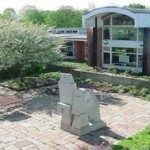 Parkside Elementary School
Parkside Elementary School
- Built: 1962
- Addition: 1990
- Architect: Norman Fletcher with The Architects Collaborative (TAC), Cambridge, Massachusetts
Parkside School sits upon a two-foot sculptured earth berm acting as a podium to lift the structure above the otherwise flat landscape in the area. This elevation helps define the recessed courtyard and play areas and the variation of levels provides a change of experience from the otherwise flat area. With no other structures immediately adjacent to the school, the slight elevation gives it a special prominence on the site and reinforces its visual identity. The building is low and sprawling taking full advantage of its large site.
Construction of the building consists of a natural finished, laminated wood-beam and steel-column system with solid wood decking. Brick is used for the interior and exterior end walls and the interior service cores. Extensive use of glass lets in natural light and extends the building visually into the open space around the building. Sills under the windows are made of crab-apple stone. Mechanical systems (HVAC) are well integrated into the building design and actually used as visual elements along the exterior walls. The blank-walled louvered mechanisms are expressed as punctuation points in the exterior rhythm of the building.
The original building consisted of three units: two classroom wings grouped by ages and a central multipurpose area with cafeteria, auditorium and playroom. Each unit had its own courtyard area open to the elements and a covered walkway between the units. The 1990 addition enclosed the classroom wing courtyards as well as the connecting walkways. It also added a large gymnasium area in the rear. The addition doubled the size of the school which had become very overcrowded due to the growth of the neighborhoods in the area of the school. Norman C. Fletcher, the architect of both the original building as well as the addition was here for the grand opening of the newly remodeled school. The Cummins Foundation paid the design fees of both the original school and the 1990 addition. Part of the stipulation for accepting money from the Cummins Foundation was that the original architect be used or at least consulted in later additions or major remodelings. In some cases this has not been possible but has been a general policy of the Cummins Foundation to maintain a continuity of design.
An identifying feature of the school is a series of barrel vaults built using wood beams carried on steel columns that give the roofline an umbrella effect. The arches start over the bus shelter in front and then repeat in the central multi-purpose area and finally over the newer gymnasium in the rear built during the 1990 addition. Another visual feature of the school is the fenestration, the unique pattern of the windows and exterior doors. This repeating pattern combined with the planar walls shows the influences of the international/modernist style. The serrated roofline of the classroom wings is accomplished by deep laminated wood beams supporting the roof that extend 4 feet beyond the exterior walls. They act to shield the classrooms from the glare of the sunlight as well as provide a distinctive architectural feature.
A special feature of the original building is the “Children’s Forum”, a space smaller than an auditorium but much larger than a classroom meant to be used for special events, combined classrooms or other flexible activities. It foreshadowed the open-concept schools built a decade later where the classrooms were modular, open and flexible.
The central inner courtyard features a sculpture entitled “The Family” by Harris Barron, a sculptor from Brookline Village, Massachusetts. It was a gift to the Parkside children by Mr. and Mrs. J. Irwin Miller and was intended for the children to climb on and interact with. The sculpture features three angular figures carved from Chelmsford granite representing a father, mother and child.
The 1990 addition also designed by Norman Fletcher is nearly seamless with the barrel vaults and window patterns repeated in the new construction. This was welcome news to many residents who were dismayed by several 1990’s additions to other schools where the new construction was radically different from the original. It is often difficult to match original styles and materials when doing additions but many architects feel that the original building should be a “point of departure” with the new building acting as a complement or a counterpoint.
This is one of several Columbus schools that share athletic and play space with the city parks department allowing maximum usage of the 50 acre site. The rear of the school is dominated by soccer fields which host both local and regional matches. The Columbus “People Trail”, our system of walking/biking paths goes through this area as well. Directly behind the school is “Freedom Field”, a playground open to the community that provides unparalleled accessibility to children of differing physical abilities. Some of the playground equipment was so new that it was getting its first installation at this playground. At the grand opening of the play area in 2006, a 45 year old man in a wheelchair was in tears because it was the first time he had ever been able to play on a playground.
This is my favorite school building in Columbus. It has a distinctive 1960’s look and the repeating rhythm of window and roofline elements are very pleasing to the eye. It has been well maintained over the years and the design still appears fresh and inviting. It has proven to be very flexible as well although some of the original elements such as the open courtyards and walkways have been changed. It is also our Columbus connection to the Bauhaus (the German school of design) that was so influential in modernist design. Walter Gropius was the founder of the Bauhaus as well as one of the co-founders of The Architects Collaborative (TAC).
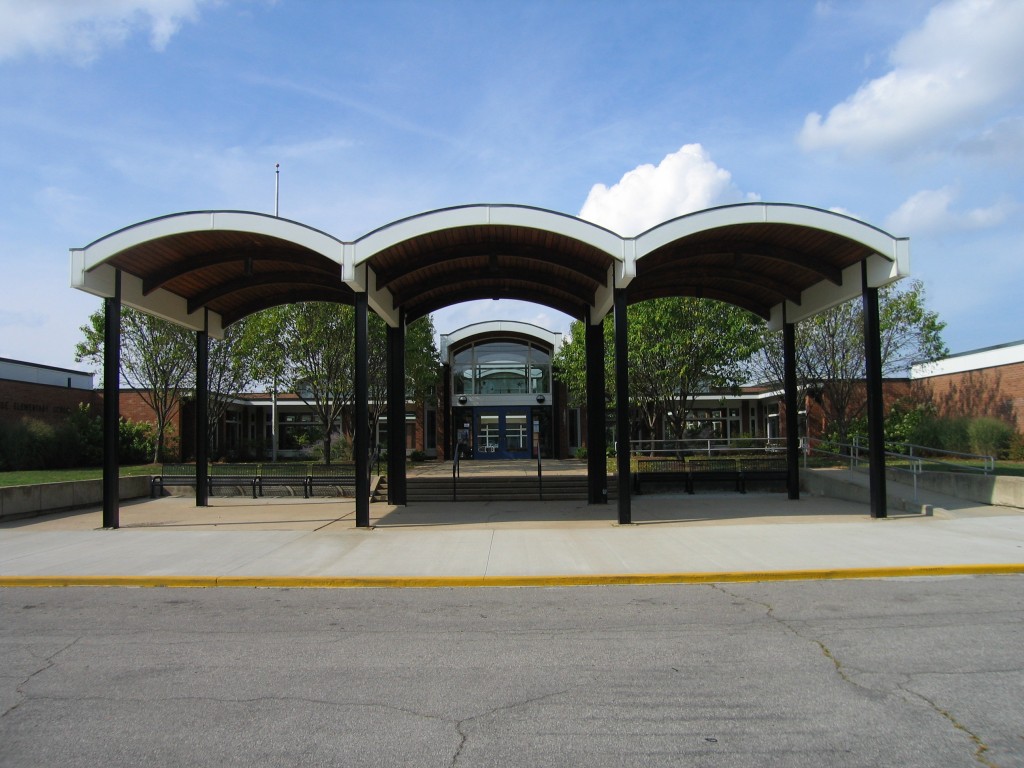 Front of school showing barrel vaults (photo by Ricky Berkey)
Front of school showing barrel vaults (photo by Ricky Berkey)
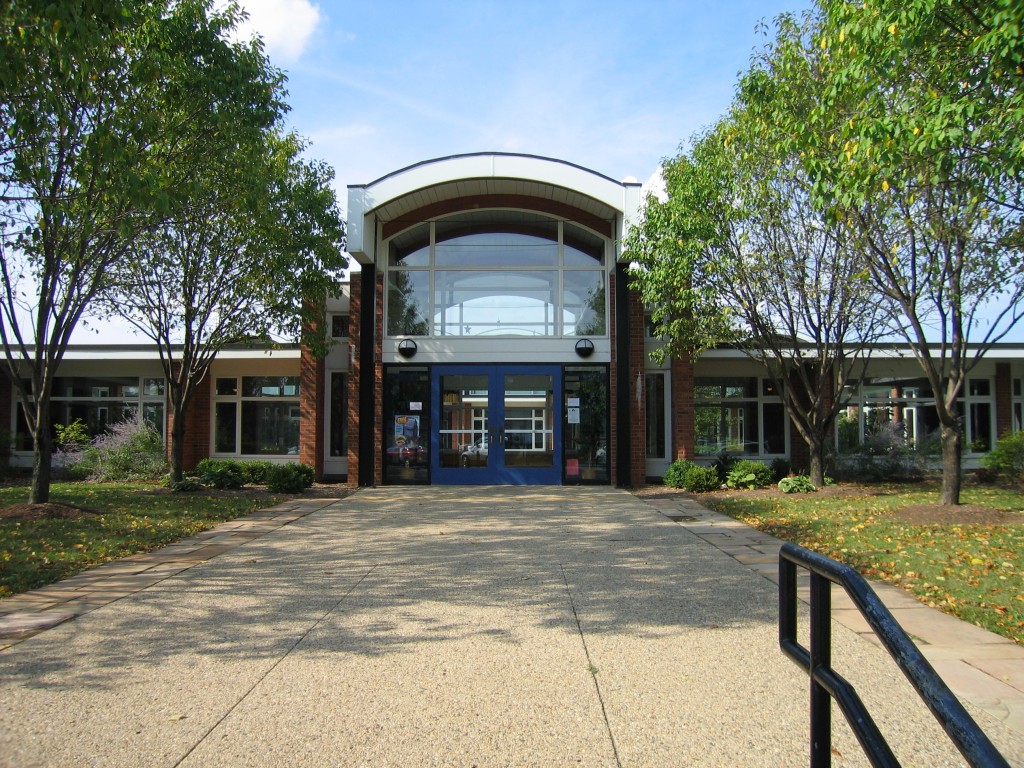 Front of school (photo by Ricky Berkey)
Front of school (photo by Ricky Berkey)
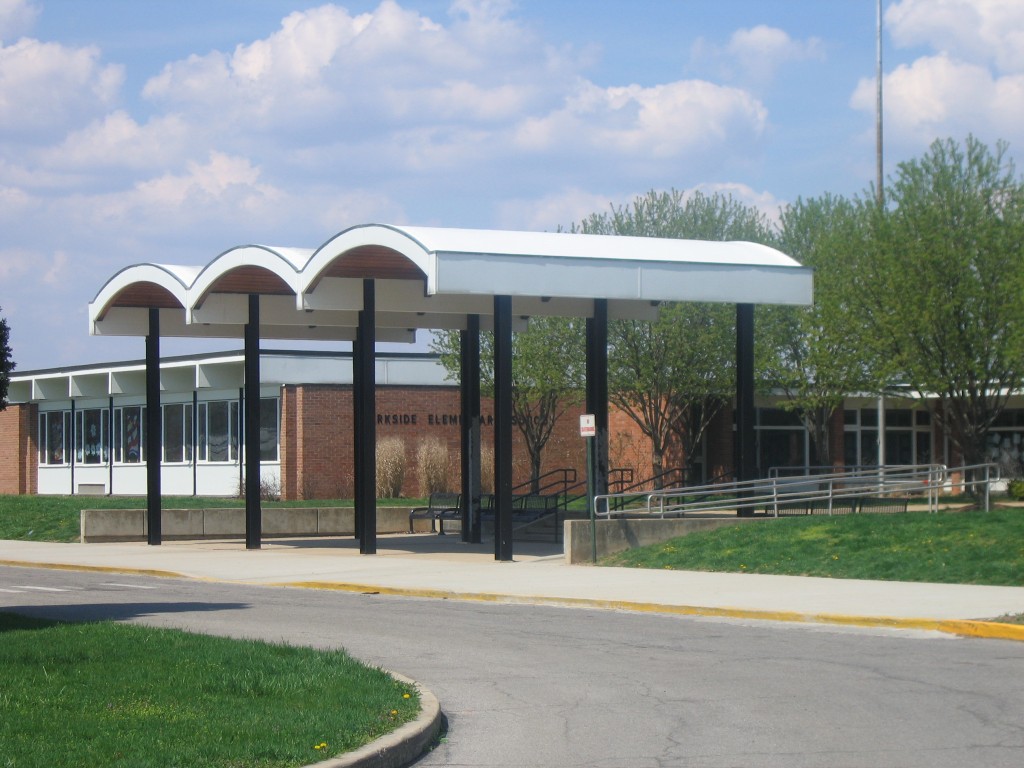 Shows bus shelter and part of classroom wing (photo by Ricky Berkey)
Shows bus shelter and part of classroom wing (photo by Ricky Berkey)
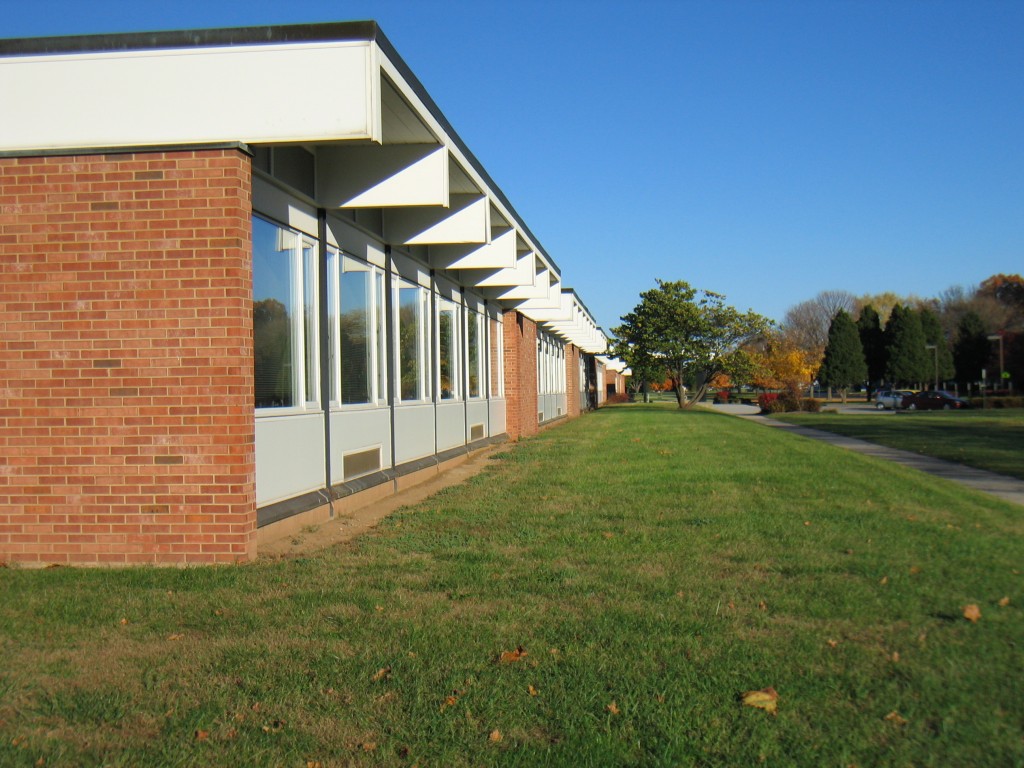 Classroom wing showing overhang of serrated roofline (photo by Ricky Berkey)
Classroom wing showing overhang of serrated roofline (photo by Ricky Berkey)
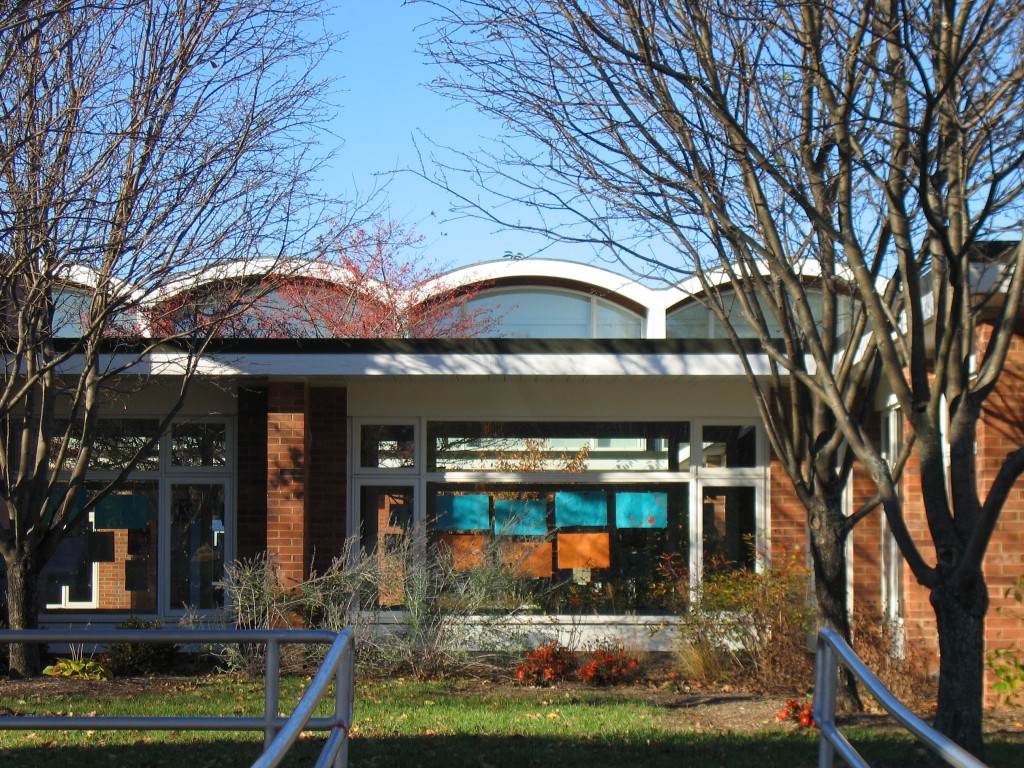 Shows barrel vaults over center section (photo by Ricky Berkey)
Shows barrel vaults over center section (photo by Ricky Berkey)
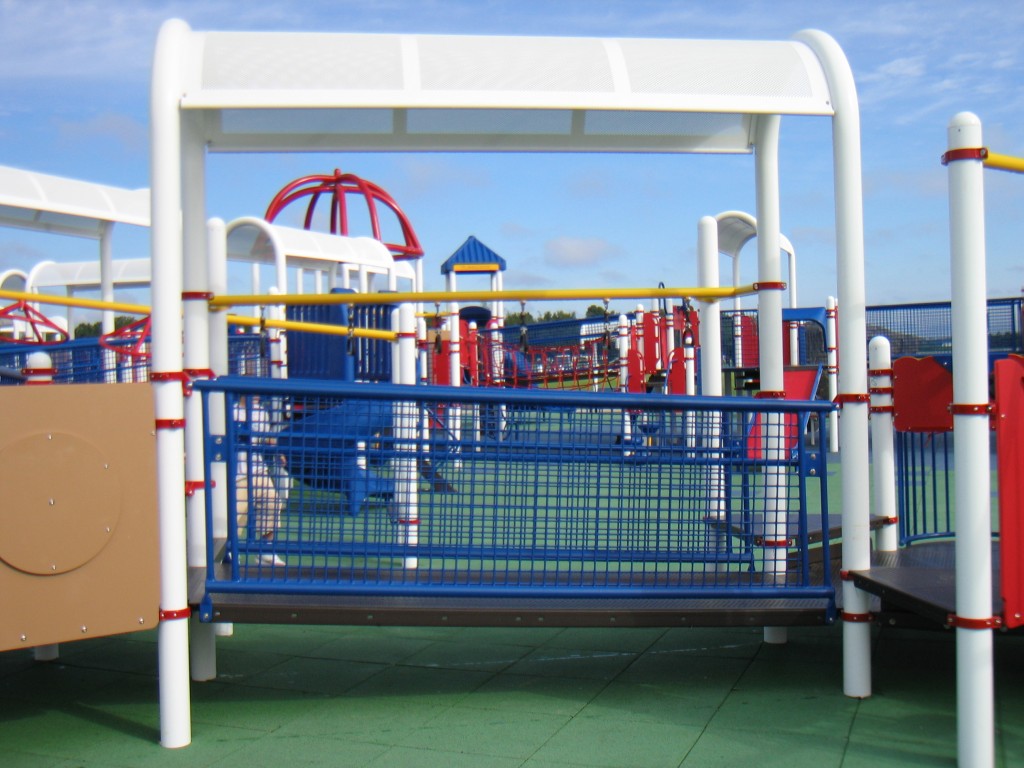 Freedom Field playground (photo by Ricky Berkey)
Freedom Field playground (photo by Ricky Berkey)
The Architects
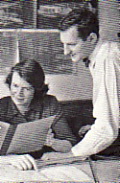 Norman Collings Fletcher
Norman Collings Fletcher
- Born December 8th 1917 in Providence, Rhode Island.
- Died May 31st, 2007.
- Yale University School of Architecture, 1940
Norman Fletcher was a co-founder of the firm The Architect’s Collaborative (TAC) in 1945 and was a partner until it was forced to close for financial reasons in 1995. After graduating from Yale he was briefly employed at Skidmore, Owings and Merrill (SOM) and Saarinen, Swanson and Associates (Eliel Saarinen’s firm) before starting TAC.
The Architects Collaborative was founded by Fletcher, Walter Gropius (formerly of the Bauhaus) and six other architects. Fletcher worked closely with Gropius on a number of different projects. Besides the Parkside School, Fletcher did two other Columbus projects: the Four Seasons Retirement Center and the former Bartholomew Consolidated School Corporation Administration Building.
Fletcher and his wife Jean (also a founding member architect of TAC) had resided at 6 Moon Hill, a cooperative housing complex in Lexington, Massachusetts designed by The Architects Collaborative in 1948. The name came from the 6 antique Moon Motor Car automobiles that the former owner had stored on the property. The original modernist homes were rectangular, timber-sided, flat-roofed designs built on a sloping hillside. Other homes have been added there over the years.
 The Architects Collaborative (TAC)
The Architects Collaborative (TAC)
The Architects Collaborative (TAC) is an architectural firm founded in 1945 by Norman Fletcher, Walter Gropius and six other architects. They won the AIA Architecture Firm of the Year Award in 1964.
Walter Gropius (pictured above) was the founder of the Bauhaus; the German school of design which was so influential in modernist design. The other partners besides Gropius and Fletcher were Jean Fletcher (Norman’s wife), John & Sarah Harkness , Robert McMillian, Louis McMillen and Benjamin Thompson.
Their intention was to form an architectural firm based on collaboration and aesthetics as well as to develop a new social consciousness in the post WW2 world. Gropius believed that architecture had definite social responsibilities. One of their specialties was public school buildings and they were very influential in implementing new school ideas as many communities were building multiple new schools to serve the “baby boom” generation.
Financial problems starting in the 1980’s led to the downsizing and eventual closing of the firm in 1995. Most of the firm’s drawings and records were saved and archived at the Rotch Library at the Massachusetts Institute of Technology (MIT). Norman Fletcher and John Harkness were with the firm for its entire 50 year history.
Links/References
City of Columbus: official City of Columbus website
Columbus Indiana Architectural Archives
Columbus Indiana Architecture Digital Archives: A small portion of the Columbus Indiana Architectural Archives available online from the IUPUI digital library
3D Models of Columbus Architecture Executed in Google SketchUp:
The Republic Newspaper – Columbus, Indiana newspaper
Bartholomew County Public Library
Historic Columbus Website – David Sechrest’s tribute to Columbus History
Historic Columbus Message Board – a companion interactive forum to the David Sechrest historical website
Bartholomew County Historical Society
 Click HERE for a Calendar of Upcoming Events in the Columbus Area.
Click HERE for a Calendar of Upcoming Events in the Columbus Area.
Click HERE for information about Tours of Columbus Architecture and Design including the Miller House.
 Ricky Berkey
Ricky Berkey
Email me: rickyberkey@gmail.com

My sister and I attended Parkside Elementary the first two years after it opened, fourth and second grades, respectively. It was an exciting time to be in Columbus and inspired me to go into architecture! I still remember Mrs. Showalter and Mrs. Herzig as the best teachers ever and Miss Sigmund, the art teacher was my first beatnik!